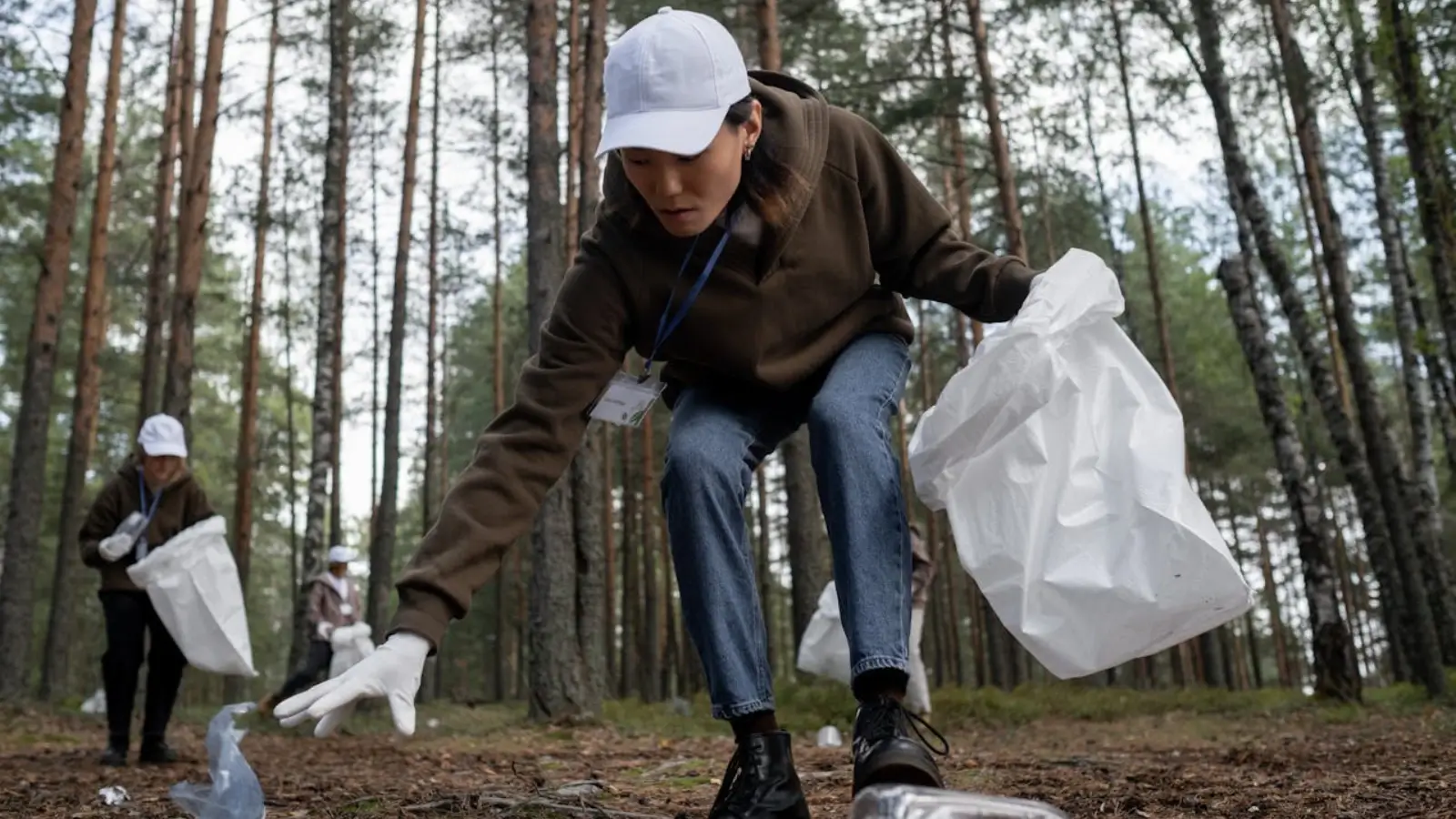


Every September, millions of people around the globe grab gloves, bags, and sometimes even wheelbarrows to tackle one of the biggest problems facing our planet: trash.
It’s called World Cleanup Day, and it’s more than just picking up litter. It’s a reminder of how much waste we produce, how much ends up in the wrong places, and what each of us can do to make things better.
But here’s the catch — World Cleanup Day isn’t only about showing up to a community clean-up with a rubbish bag in hand. It goes beyond that simple activity (although it’s a very important part of it, too). It’s also about the choices we make at home, in our neighborhoods, and even in our bathrooms (yes, bathrooms!). Small shifts in how we live add up to bigger changes, and that’s the heart of the movement.
World Cleanup Day started in Estonia back in 2008. One Saturday, thousands of volunteers collected 10,000 tons of trash in just five hours. That energy snowballed into a global movement, and today, people in more than 190 countries take part every September.
It’s about action — not just talking about the plastic crisis, climate change, or pollution, but rolling up sleeves and doing something tangible. For one day, millions of people across different time zones work toward the same goal: a cleaner planet. The idea is that if we can join forces for one day, we can build habits that last all year.
Here’s the reality: we live in a world drowning in waste. Every year, around 2 billion tons of it is generated, and a shocking portion doesn’t get properly managed. Plastic clogs rivers, cigarette butts pile up on beaches, and microplastics sneak into the food chain.
World Cleanup Day isn’t just about keeping places tidy for appearances. It’s about protecting ecosystems, improving public health, and reminding ourselves that waste doesn’t magically disappear when it leaves our homes.
If you want to take part, it’s pretty simple. You can check the official World Cleanup Day website or look up local organizations hosting events. Most cleanups don’t require special gear — just some gloves, sturdy shoes, and the willingness to get a little dirty.
You don’t need to wait for an official event, either. A group of friends, a park you love, and an hour or two of your Saturday can make a difference. One less bag of rubbish polluting a riverbank or playground is already a win.
When people think “World Cleanup Day,” they imagine beaches covered in plastic bottles or city streets lined with fast-food wrappers. That’s part of it, sure. But waste also starts much closer to home.
The bathroom, for example, is one of the most overlooked sources of household waste. Think of all the single-use plastics: shampoo bottles, disposable razors, cotton swabs, packaging for every little thing. None of it feels like much on its own, but multiply it by millions of homes and you’ve got a serious problem.
Getting involved in World Cleanup Day can mean joining a huge community clean-up effort, but it can also mean looking around your own house and making smarter choices. Here are a few bathroom-related examples that keep the movement alive long after the day itself:
Eco-friendly towels: Many regular towels are produced with water-heavy cotton processes. Choosing towels made from organic cotton or bamboo saves resources and often lasts longer. Bonus: they’re softer too.
Diatomaceous earth bath mat: Instead of constantly washing soggy fabric mats, diatomite mats dry quickly, resist mold, and reduce water waste. It’s a small swap, but one that cuts down on laundry and energy use over time.
Refillable containers: Shampoo, soap, and cleaning products are often sold in endless plastic bottles. Refill stations (or even concentrated bars) mean less plastic waste piling up.
Reusable alternatives: Switch cotton pads for washable fabric ones, or ditch disposable razors for safety razors that last years.
These changes might not sound as glamorous as a mass clean-up along a coastline, but they tie directly into the same mission: cutting down on unnecessary waste.
World Cleanup Day is powerful because it combines local action with a global vision. Picking up a single piece of trash may not seem revolutionary, but multiply that by 20 million people and suddenly you’re looking at mountains of waste diverted from rivers, oceans, and landfills.
And when those same people go home and rethink how they shop, clean, or decorate their bathrooms, the impact stretches far beyond one Saturday in September. That’s the real goal: using the momentum of a single day to create habits that last year-round.
Not everyone is going to be able to make it to a cleanup, and that’s okay. But World Cleanup Day thrives when people talk about it, share it, and encourage others to get involved. Post on social media. Invite your coworkers. Take your kids to the park and explain why you’re picking up rubbish together.
Even a small conversation — “Hey, did you know it’s World Cleanup Day?” — can inspire someone else to take action.
World Cleanup Day is a reminder that the planet we live on is shared, and so is the responsibility of looking after it. Whether you’re hauling plastic bottles off a beach, joining a community group at your local park, or just swapping to sustainable bathroom products like a wooden bathroom mat or eco-friendly towels, every action counts.
Change doesn’t come from one giant leap; it comes from millions of small steps. This September, one of those steps could be as simple as showing up, picking up, and thinking about how you can reduce waste in your own life.
Because the truth is, cleanup shouldn’t be just one day. But one day is a pretty good place to start.